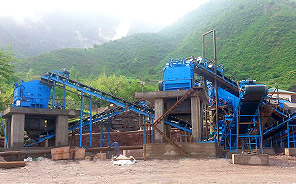Chromite beneficiation is a crucial process in the mining industry to upgrade chromite ore into high-grade concentrates suitable for metallurgical, chemical, and refractory applications. Here’s an overview of chromite beneficiation worldwide:
.jpg) 1. Global Chromite Reserves & Production
1. Global Chromite Reserves & Production
– Major Producers: South Africa, Kazakhstan, India, Turkey, Finland, and Zimbabwe dominate global chromite production.
– Reserves: South Africa holds the largest reserves (~70% of global chromite), followed by Kazakhstan and India.
– Demand Drivers: Stainless steel production ( rochrome), chemicals (chromium salts), and refractories.
rochrome), chemicals (chromium salts), and refractories.
2. Chromite Beneficiation Techniques
Chromite ore is beneficiated using physical and chemical methods to improve Cr₂O₃ content and reduce impurities (SiO₂, MgO, Al₂O₃).
# Common Beneficiation Methods:
1. Gravity Separation
– Spiral concentrators, shaking tables, jigs (for coarse chromite).
– Widely used in South Africa and India.
2. Magnetic Separation
– Low-intensity for ferromagnetic minerals (magnetite).
– High-intensity for paramagnetic chromite (Turkey, Kazakhstan).
3. Flotation
– Used for fine chromite particles with selective reagents.
– Applied in complex ores (e.g., UG2 reef in South Africa).
4. Heavy Media Separation (DMS)
– For lumpy ore pre-concentration (Zimbabwe, South Africa).
5. Leaching & Roasting
– Chemical methods to remove gangue (e.g., acid leaching for silica removal).
3. Regional Beneficiation Practices
– South Africa:
– Largest producer; mainly gravity & flotation for UG2 and Merensky Reef ores.
– Ferrochrome smelting dominates downstream processing.
– Kazakhstan & Turkey:
– High-grade lumpy ores beneficiated via gravity + magnetic separation.
– India (Sukinda Valley):
– Uses spirals, tables, and flotation for low-grade friable ores.
– Zimbabwe:
– Focus on DMS and smelting for high-Cr₂O₃ ores.
4. Challenges in Chromite Beneficiation
– Low Cr/Fe ratio ores require advanced processing.
–





Leave a Reply